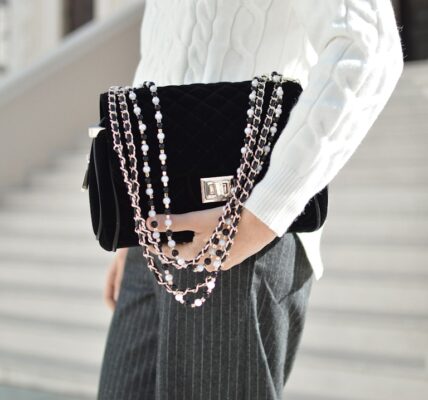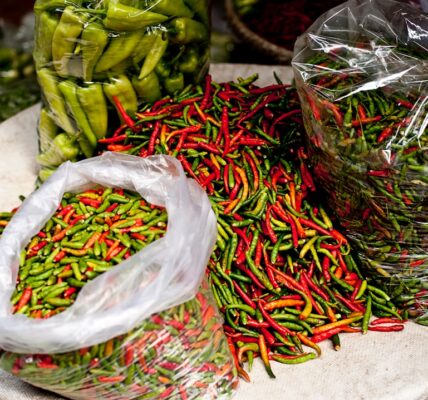Traditional Filipino clothing reflects the country’s diverse cultural heritage, blending indigenous, Spanish, and American influences into a unique style. The “barong Tagalog” is a prominent formal shirt for men, made from piña or jusi fabric and often featuring intricate embroidery. It is worn during formal events and special occasions, showcasing Filipino textile craftsmanship.
For women, the “baro’t saya” is a traditional dress consisting of a blouse (“baro”) and a long skirt (“saya”). These garments are typically made from colorful, intricately woven fabrics such as jusi, piña, or abaca. Traditional Filipino clothing symbolizes national identity and demonstrates the country’s rich textile traditions and skilled artisanship.
The influence of traditional Filipino attire extends to modern fashion, with designers incorporating indigenous textiles and patterns into contemporary designs. This fusion of traditional elements with modern styles helps preserve and celebrate Filipino cultural heritage in the fashion industry.
Key Takeaways
- Traditional Filipino clothing has a significant influence on modern fashion, with its vibrant colors, intricate patterns, and rich cultural heritage.
- Indigenous textiles and patterns are being incorporated into modern fashion, showcasing the beauty and craftsmanship of Filipino indigenous communities.
- Traditional Filipino accessories are being revived and modernized, adding a touch of heritage and authenticity to contemporary fashion.
- Contemporary fashion celebrates Filipino heritage through the use of traditional elements, promoting cultural pride and diversity.
- Filipino designers are making a mark on the global stage, showcasing their talent and creativity in the international fashion industry.
Incorporating Indigenous Textiles and Patterns into Modern Fashion
Preserving Cultural Heritage through Fashion
In recent years, there has been a growing movement to incorporate indigenous textiles and patterns into modern fashion in the Philippines. Designers are increasingly turning to traditional weaving techniques and indigenous fabrics such as abel iloco, inabel, t’nalak, and ikat to create contemporary clothing and accessories that celebrate Filipino heritage. These indigenous textiles are known for their intricate patterns, vibrant colors, and unique textures, making them a source of inspiration for designers looking to infuse their creations with a sense of cultural identity.
Economic Opportunities and Cultural Empowerment
By incorporating indigenous textiles and patterns into modern fashion, designers are not only preserving traditional craftsmanship but also providing economic opportunities for local artisans and weavers. This movement has also sparked a renewed interest in traditional weaving techniques, leading to the revival of age-old practices that were once in danger of being forgotten.
A Platform for Cultural Preservation and Empowerment
As a result, modern Filipino fashion has become a platform for cultural preservation and empowerment, allowing indigenous communities to showcase their heritage through contemporary designs that resonate with a global audience.
Reviving and Modernizing Traditional Filipino Accessories

In addition to traditional clothing, Filipino fashion also encompasses a wide array of accessories that hold cultural significance. From handwoven bags and baskets to intricate jewelry and headpieces, traditional Filipino accessories are a testament to the country’s rich artisanal traditions and craftsmanship. In recent years, there has been a renewed interest in reviving and modernizing traditional Filipino accessories, with designers putting a contemporary spin on age-old designs to create unique and stylish pieces that pay homage to the past while embracing the present.
One example of this revival is the resurgence of “banig” bags, which are traditionally handwoven from dried leaves or grass. These eco-friendly bags have gained popularity not only in the Philippines but also internationally, as they embody sustainability and ethical practices in fashion. Similarly, traditional jewelry such as “filigree” and “balangay” necklaces have been reimagined by designers, incorporating modern elements while staying true to their cultural roots.
By reviving and modernizing traditional Filipino accessories, designers are not only preserving heritage crafts but also contributing to the growth of the local fashion industry and promoting sustainable practices.
Celebrating Filipino Heritage through Contemporary Fashion
| Designer | Collection Name | Inspiration | Showcased at |
|---|---|---|---|
| Mark Bumgarner | Barong Baro at Manila Fashion Festival | Modern twist on traditional barong | Manila, Philippines |
| Rajo Laurel | Manila Wear at Paris Fashion Week | Highlighting indigenous textiles | Paris, France |
| Patis Tesoro | TernoCon at Cultural Center of the Philippines | Reviving the terno silhouette | Manila, Philippines |
Contemporary fashion in the Philippines has become a powerful platform for celebrating Filipino heritage and cultural diversity. Designers are increasingly drawing inspiration from traditional motifs, symbols, and techniques to create modern clothing that reflects the country’s rich cultural tapestry. Whether it’s through bold prints inspired by indigenous textiles or innovative silhouettes that pay homage to traditional garments, Filipino designers are finding creative ways to infuse their creations with a sense of national pride and identity.
Moreover, the rise of Filipino fashion on the global stage has provided an opportunity for the country to showcase its unique heritage to an international audience. Filipino designers have been gaining recognition for their ability to blend tradition with innovation, creating collections that resonate with both local and global fashion enthusiasts. By celebrating Filipino heritage through contemporary fashion, designers are not only promoting cultural awareness but also fostering a sense of unity and pride among Filipinos around the world.
The Rise of Filipino Designers on the Global Stage
In recent years, Filipino designers have been making waves on the global stage, gaining recognition for their unique aesthetic and innovative approach to fashion. From haute couture to ready-to-wear collections, Filipino designers have been capturing the attention of international fashion critics and industry insiders with their bold creativity and distinct point of view. Designers such as Rajo Laurel, Michael Cinco, and Josie Natori have successfully carved out a niche for themselves in the global fashion scene, showcasing the talent and creativity that the Philippines has to offer.
The rise of Filipino designers on the global stage has not only put the country on the map but has also opened doors for other aspiring talents to follow suit. With their ability to seamlessly blend traditional elements with contemporary design, Filipino designers have been able to create collections that appeal to a diverse audience, transcending cultural boundaries and resonating with fashion enthusiasts around the world. As a result, Filipino fashion has become synonymous with innovation, craftsmanship, and a deep appreciation for heritage, earning its place in the global fashion landscape.
Balancing Tradition and Innovation in Filipino Fashion

Filipino fashion is known for its unique ability to strike a balance between tradition and innovation. This delicate balance has allowed the industry to remain dynamic and relevant in an ever-changing world.
Preserving Cultural Heritage
Traditional elements such as indigenous textiles, patterns, and techniques serve as a foundation for many designs. Designers are constantly pushing boundaries and reinterpreting traditional concepts to create contemporary pieces that are both culturally relevant and forward-thinking.
Evolution through Experimentation
Filipino fashion continues to evolve through experimentation and creativity. Designers are constantly seeking new ways to express themselves, while still honoring the country’s rich cultural heritage. This has led to the creation of unique and innovative designs that are both modern and authentic.
A Force to be Reckoned With
By striking this delicate balance, Filipino fashion has been able to maintain its cultural authenticity while embracing new ideas and influences. This has enabled the industry to thrive in the face of globalization, making it a force to be reckoned with in the global fashion arena.
Embracing Sustainability and Ethical Practices in Filipino Fashion Industry
In recent years, there has been a growing emphasis on sustainability and ethical practices within the Filipino fashion industry. Designers and brands are increasingly prioritizing eco-friendly materials, ethical production processes, and fair labor practices to minimize their environmental impact and support local communities. This shift towards sustainability has led to the rise of eco-conscious fashion labels that are committed to creating stylish yet environmentally responsible clothing.
Furthermore, there has been a renewed focus on preserving traditional crafts and supporting local artisans through fair trade initiatives and community-based collaborations. By embracing sustainability and ethical practices, the Filipino fashion industry is not only contributing to global efforts towards environmental conservation but also empowering local communities and preserving cultural heritage. This commitment to sustainability has positioned Filipino fashion as a leader in ethical practices, setting an example for the industry as a whole.
In conclusion, traditional Filipino clothing has had a significant influence on modern fashion in the Philippines, with designers incorporating indigenous textiles and patterns into their creations while reviving and modernizing traditional accessories. Contemporary fashion in the Philippines celebrates Filipino heritage through innovative designs that showcase the country’s rich cultural tapestry on the global stage. The rise of Filipino designers internationally has brought attention to their ability to balance tradition with innovation while embracing sustainability and ethical practices within the industry.
As Filipino fashion continues to evolve, it remains deeply rooted in tradition while embracing new ideas and influences, making it a force to be reckoned with in the global fashion landscape.
If you’re interested in learning more about Filipino fashion, you should check out the article “10 Filipino Fashion Brands You Need to Know” on Fede Custom Shop. This article highlights some of the top fashion brands in the Philippines, showcasing the unique and vibrant style of Filipino fashion. It’s a great resource for anyone looking to explore the diverse and exciting world of Filipino fashion.
FAQs
What is Filipino fashion?
Filipino fashion refers to the clothing, accessories, and styles that are characteristic of the Philippines. It encompasses a wide range of influences, from traditional indigenous clothing to modern, Western-influenced designs.
What are some traditional elements of Filipino fashion?
Traditional elements of Filipino fashion include the use of indigenous textiles such as piña, jusi, and abaca, as well as traditional garments like the barong Tagalog for men and the terno for women. These elements often incorporate intricate embroidery and handwoven patterns.
How has Filipino fashion evolved over time?
Filipino fashion has evolved over time to incorporate a mix of traditional and modern influences. While traditional elements continue to be celebrated, Filipino designers also draw inspiration from global fashion trends, resulting in a diverse and dynamic fashion scene.
Who are some notable Filipino fashion designers?
Notable Filipino fashion designers include Rajo Laurel, Michael Cinco, Josie Natori, and Monique Lhuillier, among others. These designers have gained international recognition for their innovative designs and contributions to the global fashion industry.
What are some popular Filipino fashion trends?
Popular Filipino fashion trends include the use of vibrant colors, intricate embroidery, and the incorporation of indigenous textiles into modern designs. Additionally, there is a growing movement towards sustainable and ethical fashion practices within the Filipino fashion industry.




